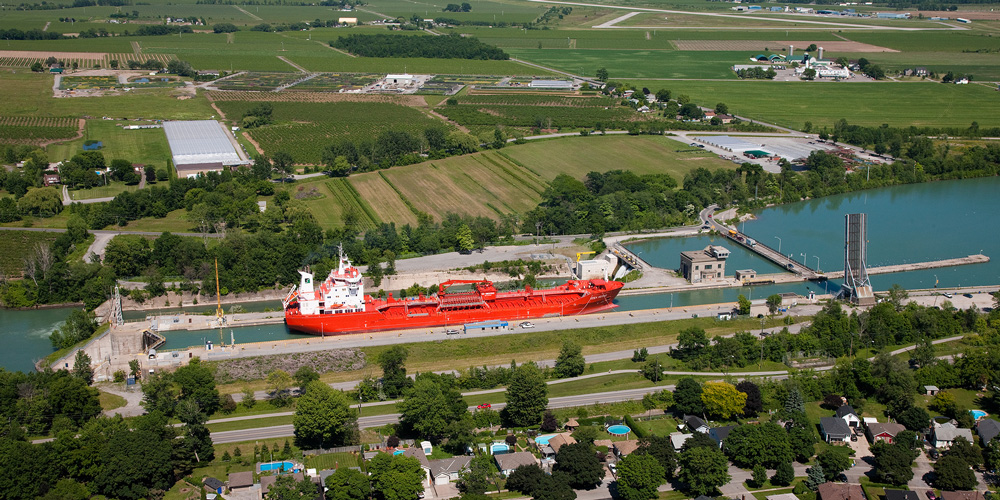#6 – Mooring and Casting Off in Locks
March 23, 2005
Masters of vessels transiting the Seaway are advised that they must have sufficient competent crew members on board to properly handle the mooring lines and winches during the lockage operation. Inadequately trained seamen are not to be assigned to locking through duties.
It is important that moorings be rigged in accordance with Seaway Handbook and that instructions provided on the vessel’s Ship Inspection Report be adhered to (page 1 of the inspection report should be posted on the bridge and available for Masters/Pilots use). Masters must ensure that crew members are alert and attentive to all phases of the lockage procedure since the improper operation of mooring winches and the careless handling of mooring lines can result in serious injury to lock and shipboard personnel.
Masters are required to note the following practices:
- During downbound lockages, release the tension of the mooring lines quickly at castoff;
- Following the castoff signal, do not take in mooring lines prematurely; in the downbound direction, wait for the eye of the mooring wire to come over the coping before starting to take in the mooring wire;
- Ensure that lines are coiled properly on the winch drums to avoid pinching and backlash;
- Ensure that the slack of mooring wires is taken up only after the appropriate signal has been received from the lock crew during the initial mooring of the vessel. Thereafter, the proper tensioning of the lines during the lock fill or dump operation is the responsibility of the vessel crew;
- Vessels are required to maintain their position in the lock during the raising and lowering operations. Winches or hand-held mooring lines shall be properly attended to avoid the necessity of engine or thruster manoeuvres during the locking operation. Care must be taken to ensure the vessel does not back up past the “STOP” sign at the stern of the vessel when preparing to depart the lock after raising or lowering;
- Mariners are reminded that at the Eisenhower and Snell Locks, a four (4) person lockage procedure is normally in operation. At times, circumstances will exist where a three (3) person lining procedure would be instituted. Mariners will be advised as soon as possible, prior to utilizing the three (3) person procedure. Mariners are requested not to start ahead until the horn is sounded. This will give the linehandlers sufficient time to open gates and raise ship arrestors, then come back on the wall and cast off mooring lines;
- Mariners are advised that the white light located at either end of a lock and which is activated when the end of the lock is fully open is not to be used as a signal to cast off. (These lights serve only as indicators for lock wall personnel).
The vessel is to remain secured until the Seaway officer in charge of the mooring operation gives castoff instructions. When a vessel is instructed to cast off, the mooring lines are to be slackened and the Master must ensure that they have all been cast off and clear of the bollards before commencing to heave the lines inboard.
The vessel must not exit the lock at such a speed that the mooring lines are not completely inboard before passing the lock gates. Failure to do so can result in injuries to personnel and damages to both Seaway and shipboard installations.
- In Canadian locks, the stern lines of an upbound vessel in Locks 1 to 4, Montreal/Lake Ontario section, and 1 to 7, Welland Canal, will be secured first, when requested by the Master through the appropriate Traffic Control Centre, provided the following applies:
- The overall length of the vessel is 185 metres or less, regardless of the beam;
- The overall length of the vessel is greater than 185 metres, but the beam is 20 metres or less.






